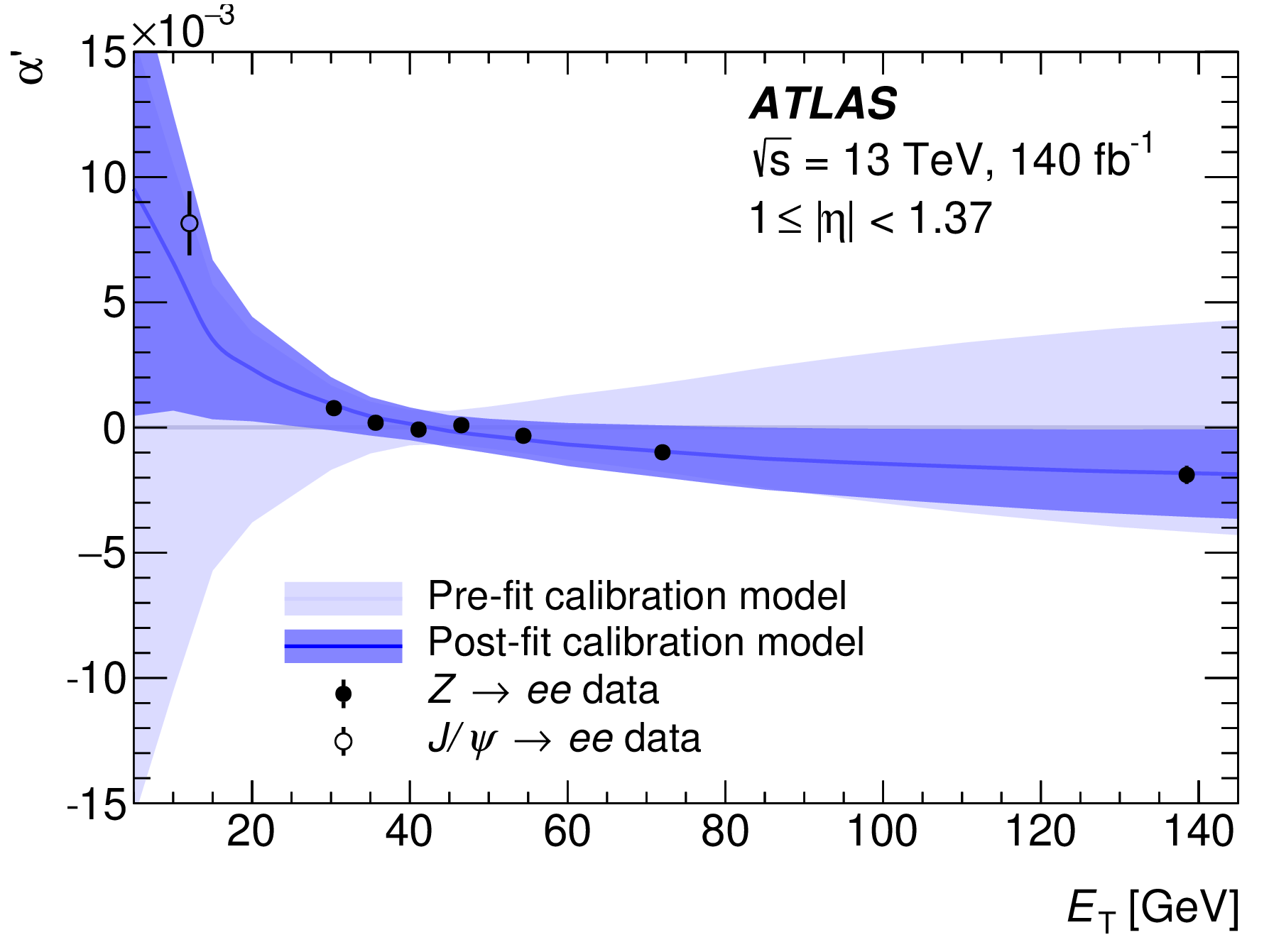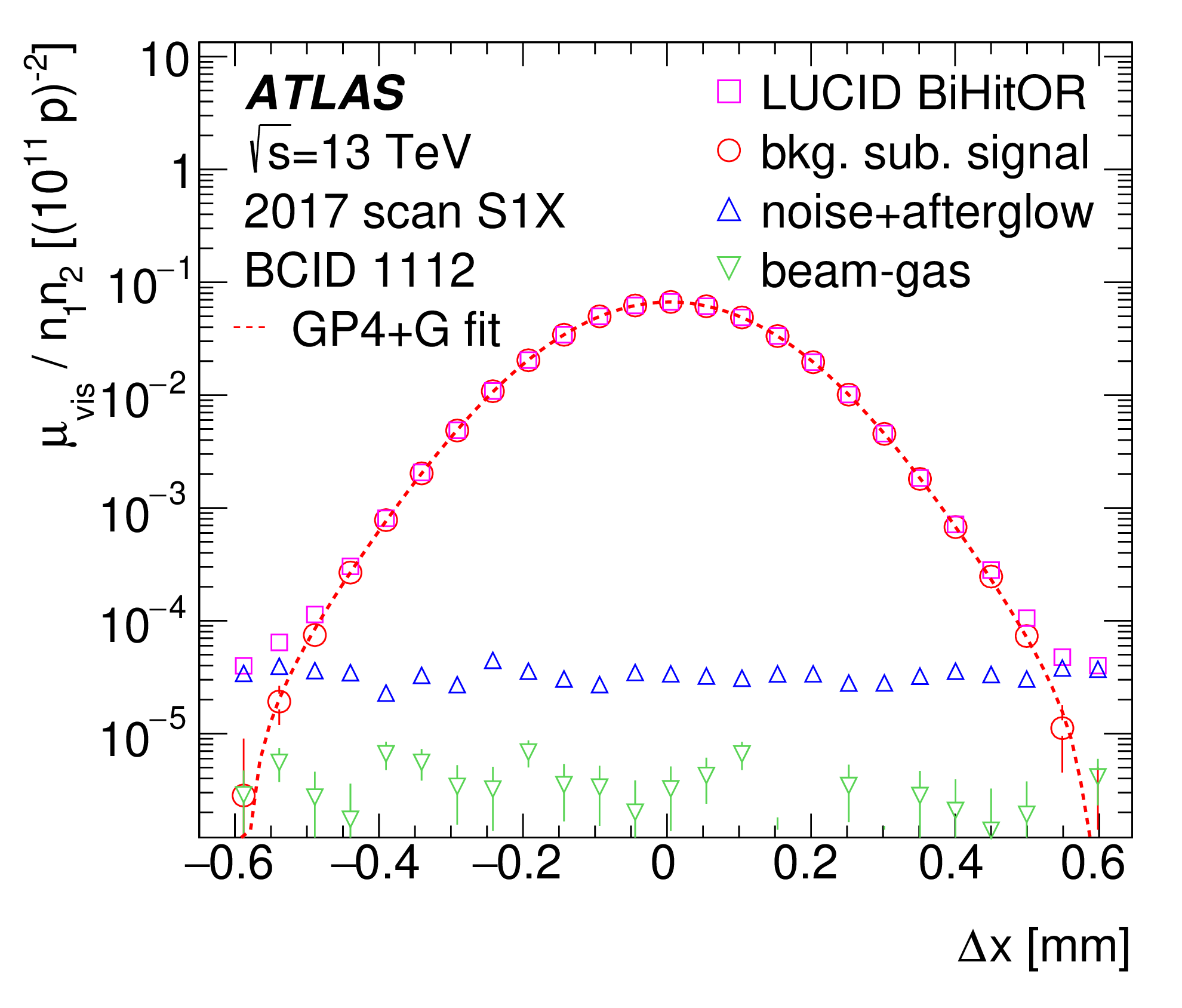ATLAS at the starting line
19 May 2017 | By
The start of the 2017 run marks the conclusion of a maintenance period known as the Extended Year-End-Technical-Stop (EYETS). This upkeep is vital for the health and well-being of the detector, ensuring that ATLAS can thrive for the months of high-intensity operation that follow.
From repairs and refurbishments to new installations, EYETS was an extremely busy period for the ATLAS detector; a selection of these activities is described below.
Muons on the Move
The Muon Spectrometer is one of the largest systems in the ATLAS detector. Located in the outermost part of ATLAS, it measures the momentum and trajectory of muons with high accuracy. Particle interactions featuring muons are vital to many analyses and may well be the harbinger of new physics.
During EYETS, ATLAS physicists made a significant new addition to the Muon Spectrometer: the installation of 12 new small-diameter Muon Drift Tube (sMDT) chambers inside the feet of the detector. These new compact chambers sit in detector regions where previous chambers could not fit, allowing physicists to improve the precision on the momentum measurement of muons produced in particle collisions passing in those regions.
Each chamber contains small tubes filled with pressurized gas. As a muon passes through these tubes, it leaves a trail of electrically charged particles, drift to anode wires accurately positioned at the centres of the tubes. By measuring the time it takes for these particles to drift, it is possible to determine the position of the muon as it passed through. The new sMDT design features smaller diameter tubes, providing an order of magnitude higher rate capability. This will be vital for the intense environment of the High-Luminosity LHC (HL-LHC), which is scheduled for 2026.
In addition to this installation, the ATLAS muon teams carried out significant maintenance work on the Thin Gap Chambers (TGC) used for fast muon identification in the ATLAS trigger system, replacing 16 endcap muon trigger chambers; the Cathode Strip Chambers (CSC), bringing two chambers to the surface for repairs and then reinstalling them in the detector; and the sMDT BME chambers, which were also removed and repaired above ground (see video). These latter two systems are needed for the precision measurement of muon trajectories. In addition, large maintenance work has been carried out on the Resistive Plate Chamber (RPC) system, in particular to repair gas leaks.

Comparison between the current Monitored Drift Tubes (MDT) (left) and the new Small- diameter Muon Drift Tubes (sMDT) (right) (Image: ATLAS Collaboration/CERN)

Location of the newly-installed BMG chambers at the foot of the ATLAS detector. (Image: ATLAS Collaboration/CERN)

Engineers carry out repairs on a BME small-Muon Drift Tube chamber. (Image: E. Ward/ATLAS Collaboration)

A faulty Cathode Strip Chamber is inspected with a microscope above ground. (Image: ATLAS Collaboration/CERN)
Going Forward
Over the shutdown, major developments were made in the ATLAS Experiment’s Forward Physics programme. First, there was the completion of the ATLAS Forward Proton (AFP) sub-detector, located about 210 m from the interaction point on both sides of the ATLAS experiment. The AFP project extends the physics reach of ATLAS by tagging and measuring the momentum and emission angle of very forward protons.
Meanwhile, shielding was installed around the ALFA sub-detector. The Zero Degree Calorimeter (ZDC) sub-detector was removed for upgrades, in preparation for the lead–lead run of the LHC in 2018. Finally, improvements were made to the LUCID sub-detector, with 16 new photomultipliers installed close to the beam-pipe. LUCID provides precision measurements of the LHC luminosity, a vital parameter for physics analyses.
Tales of the TileCal
The Tile Calorimeter (TileCal) covers the most central region of ATLAS, and is designed to detect and measure hadrons. It is made of almost 200 modules, each composed of iron plates and plastic scintillator tiles.
A top priority for this shutdown was the repair of air leaks in the front-end cooling system. During EYETS, over 40 modules were inspected and repairs were made. This is a provisional solution, as an extensive consolidation campaign is planned for the LHC’s second Long Shutdown (LS2) in 2019.
In parallel, ATLAS TileCal teams also performed maintenance of the front-end electronics of 48 modules (see video). In preparation for the HL-LHC, engineers doubled the number of read-out driver links and processing units to improve the processing power and bandwidth at high trigger rates.
Tuning the Accordion
The Liquid Argon (LAr) Calorimeter consists of radial layers of accordion-shaped lead plates, interspersed with thin layers of liquid argon. It is designed to provide uniform precision measurements of electrons, photons, jets and missing transverse energy.
High on the repair list was the front-end cooling manifold, where air was found to enter the system. The affected cooling manifold was removed in December 2016 and sent to Brookhaven National Laboratory (USA) for repairs. By the following month, it was already fully refurbished and had returned to ATLAS to be reinstalled in the detector.
Teams also investigated the sub-detector’s front-end electronic boards. A list of issues had been maintained throughout 2016, providing excellent guidance during the EYETS intervention. Over a dozen boards were either replaced or repaired, with each of the almost 200,000 read-out channels checked on an individual basis.
The Last Stop
While activities underground in the ATLAS experiment have drawn to a close, this has proved to be a very productive technical stop. ATLAS physicists can now look forward to another exciting year of efficient and high-quality data-taking.
Learn more about the 2017 run:
- Beams return to the ATLAS Experiment, ATLAS News, 29 April 2017
- ATLAS kicks off a new year at 13 TeV, ATLAS News, 23 May 2017
- Kick-off for the 2017 LHC physics season, CERN Media Information, 23 May 2017







